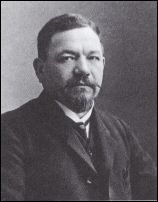
Henrik Wigström
(1862-1923)
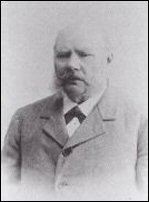
August Holmström
(1829-1903)
Workmasters and Marks
Toby Faber, author of Fabergé’s Eggs: The Extra-ordinary Story of the Masterpieces that Outlived an Empire (2008), wonders why Carl Fabergé over the years became known as Peter Carl Fabergé?
Dr. Ulla Tillander-Godenhielm’s response to this question: A list of the names for all known members of the Fabergé family according to their birth certificates is in Fabergé ja hänen suomalaiset mestarinsa (Fabergé and His Finnish Workmasters) 2008, 18-19. It is not unusual for the calling name to come second.
Peter Karl Fabergé was born on May 30, 1846. His Russian mark was  for Karl Fabergé (Карл Фаберже); for the English market it was CF
for Karl Fabergé (Карл Фаберже); for the English market it was CF  . I have always thought it was wrong to say Peter Carl for the same reason that I would find it strange, if you called me Edith Ulla. Bainbridge was almost a poet – his text is ‘music’ and Peter Carl somehow sounded better to him than the prosaic Karl.
. I have always thought it was wrong to say Peter Carl for the same reason that I would find it strange, if you called me Edith Ulla. Bainbridge was almost a poet – his text is ‘music’ and Peter Carl somehow sounded better to him than the prosaic Karl.
Tillander-Godenhielm further suggests the names of the Finnish Fabergé workmasters (Ibid., 404-5) be cited as their names are spelled on their birth certificates, with the understanding that the birth certificate lists all given names of the person. Only the names the workmasters themselves used in their marks should be cited with Fabergé objects. Thus, the workmaster Armfelt often misspelled Karl Armfeldt should be Hjalmar Armfelt, Victor Aarne should be Viktor Aarne and Anders Nevalainen should be Antti Nevalainen, etc.
Hallmarks and Other Marks
Russian hallmarks extant in the late nineteenth and early twentieth centuries were as follows. (Source: Lowes and McCanless, pp. 176-177)
For St. Petersburg before 1899

The city’s coat of arms of crossed anchors and
scepter the metal standard in zolotniks: for gold,
56 or 72 zolotniks (corresponding to about 14 and
18 carats, respectively); for silver 84 and 88 (or
875/1000 and 916/1000 parts of silver, making 88
slightly below sterling in silver content)
For St. Petersburg before 1899

The city’s coat of arms of St. George and the
dragon the metal standard in zolotniks, as above
After 1899 a uniform mark was adopted throughout Russia. The traditional woman’s headdress, the kokoshnik, was introduced. For the years to 1908, the head faces to the left, and from 1908, to the right.
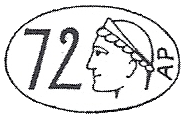

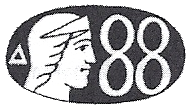
After 1908, St. Petersburg included the Greek letter alpha, and Moscow, the Greek letter delta. There had been much debate over how and when the kokoshnik hallmark was actually introduced. Recent reseach by Valentin Skurlov has clarified the position, and readers wishing to know more are referred to his enlightening article, “Russian Hallmarks at the Turn of the 19th Century” in von Habsburg et al., Fabergé: Imperial Craftsman and His World (2000), 404.
There are no hard and fast rules regarding the marks of the House of Fabergé. In St. Petersburg, “Fabergé” in Cyrillic script was used, although the initials KF in Cyrillic were used on smaller items.


Some silver objects made by the workmasters Antti Nevalainen and Julius Rappoport have Fabergé’s name with the initial K, plus a double-headed eagle, indicating the items were sold in Moscow.
The Imperial Warrant of the double-headed eagle appears, as a rule, on objects made in Fabergé’s Moscow branch, together with “K. Fabergé” in Cyrillic script. Some objects have been found with just the initials KF in Cyrillic.
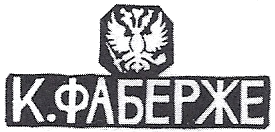
There are various exceptions, and readers wishing to investigate further are referred to Géza von Habsburg’s article “Hallmarks,” in von Habsburg and Lopato, Fabergé: Imperial Jeweller (1993). Articles made for the London shop had “Fabergé” or “CF” stamped on them in Roman letters and often have later English import marks.


The People and the Companies
To understand how the gold, silver, and jewelry industry was structured in Russia at this time, it is worth quoting from Max Engman’s article “Finnish Goldsmiths in St. Petersburg during Two Centuries,” in Tillander-Godenhielm, et al., Carl Fabergé and His Contemporaries (1980):
In the days of the guild system, craftsmen underwent a regulated course of training from apprentice to journeyman, i.e., fully trained craftsman. Journeymen often travelled so as to have the opportunity of increasing their professional skill under other masters and in other places. The journeyman’s aim was to become a master, i.e., to establish himself either as a workmaster in a large firm or as an independent employer with his own workshop.
Engman goes on to relate how the Finnish masters meshed into the fabric of St. Petersburg and, in particular, how they related to the House of Fabergé:
Most of the Finnish masters were only concerned with production; very few had their own shops. As a rule, Finnish workshops worked either under contract or as free subsidiary suppliers to firms who took care of sales. The high degree of specialization in the field favoured the adoption of a system of subsidiary suppliers. The House of Fabergé had an organisation of this kind. In addition to the workshops which operated on the firm’s premises, many of which were presided over by Finnish masters, Fabergé employed many other workshops as subsidiary suppliers.
Viktor Aarne – workmaster mark BA  – active 1890-1904. Returned to Finland as an independent jeweler, J.V.A mark
– active 1890-1904. Returned to Finland as an independent jeweler, J.V.A mark
Feodor Afanassiev (1870-?) – workmaster mark ФA  – active 1913-1917
– active 1913-1917
Between 1883 and 1888 he was a journeyman with the Finnish master Enock Sistonen, thereafter, he worked for the jeweler Karl Bock. While employed by Bock, he worked on his master’s degree, was granted his rights & certificate in 1907, and allowed to use a master’s mark, the use of which was strictly enforced by assay laws in Imperial Russia.
Between 1883 and 1888 he was a journeyman with the Finnish master Enock Sistonen, thereafter, he worked for the jeweler Karl Bock. While employed by Bock, he worked on his master’s degree, was granted his rights & certificate in 1907, and allowed to use a master’s mark, the use of which was strictly enforced by assay laws in Imperial Russia.
Hjalmar Armfelt – workmaster mark ЯА  – active 1904-1917
– active 1904-1917
Ulla Tillander-Godenhielm advises the entry AB. Unidentified Workmaster (Lowes & McCanless, Fabergé Eggs, 2001, 178) is incorrect and should refer to Abraham Beilin (Beilin and Son, ibid., 185). She further states Fabergé and many other companies (“… also my great grandfather and grandfather Alexander Tillander …”) turned for assistance to Abraham Beilin when they did not have the capacity to fulfill orders. Two examples on the misidentification of the maker’s mark AB are in Keefe, Masterworks of Fabergé: The Matilda Geddings Gray Foundation Collection, 1993, 144, and all subsequent publications for this collection. The misidentification was originally an error by Dr. Tillander-Godenhielm.
Sotheby’s London, 26 November 2008, Lot 163 (identified here as Andrei Bragin, a silversmith who exclusively produced holloware and flatware. Valentin Skurlov is credited with recognizing this mistaken identity problem in Lowes & McCanless, 185). This latter cigarette case, decorated with an imperial double-headed eagle, is in an original étui of A. Tillander and was commissioned by the Cabinet of His Imperial Majesty as an Imperial gift.
August Hollming – workmaster mark A*H  – active 1880-1913
– active 1880-1913
Väinö Hollming – August’s son, continued using his father’s mark A*H  – active 1913-1916
– active 1913-1916
Albert Holmström – Son of August Holmström, continued using his father’s mark AH  – active 1903-1917
– active 1903-1917
Biographical details on Albert Holmström (1876-1925) – He was the son of August Holmström, who took over his father’s jewelry workshop after his death in 1903, and maintained the quality of the pieces made. It appears to be unique in the Fabergé genre that the same mark was used by two generations of qualified workmasters, and needs to be considered in dating a piece. Examples of their work are the 1892 Diamond Trellis Egg (2011 McFerrin Collection), and the 1896 Lilies of the Valley Basket (Matilda Geddings Gray Collection) and under Albert’s leadership, the 1913 Winter Egg (private collection) and 1914 Mosaic Egg (British Royal Collection).
was used by two generations of qualified workmasters, and needs to be considered in dating a piece. Examples of their work are the 1892 Diamond Trellis Egg (2011 McFerrin Collection), and the 1896 Lilies of the Valley Basket (Matilda Geddings Gray Collection) and under Albert’s leadership, the 1913 Winter Egg (private collection) and 1914 Mosaic Egg (British Royal Collection).
Biographical details on Albert Holmström (1876-1925) – He was the son of August Holmström, who took over his father’s jewelry workshop after his death in 1903, and maintained the quality of the pieces made. It appears to be unique in the Fabergé genre that the same mark
Alina Holmström – Sister of Albert Holmström, worked as a designer in the Holmström shop. Further reading: Tillander-Godenhielm’s award winning Fabergén suomalaiset mestarit (2011) and Snowman, A. Kenneth, Lost and Found: The Recently Discovered Jewelry Designs from the St. Petersburg Archives (1993). (Winter 09-10)
August Holmström (1829-1903) – workmaster mark AH  – active 1857-1903
– active 1857-1903
His workshop created the Fabergé copies of the Imperial regalia in a one- to ten-scale miniatures. The history of the tiara in the McFerrin Collection has an interesting historical connection dating back to ca. 1810 and involves the Holmström workshop ca. 1890. Two more tiaras exist with a flower theme from this same workshop, after 1903 owned by August’s son Albert. (Winter 09-10 | Spring 13)
His workshop created the Fabergé copies of the Imperial regalia in a one- to ten-scale miniatures. The history of the tiara in the McFerrin Collection has an interesting historical connection dating back to ca. 1810 and involves the Holmström workshop ca. 1890. Two more tiaras exist with a flower theme from this same workshop, after 1903 owned by August’s son Albert. (Winter 09-10 | Spring 13)
Has anyone seen cigarette cases in gold marked HK (Heikki Kaksonen), St. Petersburg, 1908-17? This workmaster was one of the main makers of cigarette cases in Wigström’s workshop at Fabergé before he established himself as an independent master, and later worked in Finland.
Erik Kollin (1836-1901) – workmaster mark EK  – active 1870-1901
– active 1870-1901
Born in Pohja, Finland, Erik August Kollin was initially trained in his native country, then a Grand Duchy of the Russian Empire. Upon moving to the Imperial Russian capital, St. Petersburg, Kollin began working in 1858 as a journeyman for Gustav Fabergé’s principal jeweler, August Wilhelm Holmström (active 1857-1903). Kollin qualified as a master goldsmith in 1868 and opened his own workshop in 1870 under exclusive contract to Fabergé. Two years later Carl Fabergé, now managing his father’s business, appointed Kollin the first chief workmaster to oversee all the firm’s workshops. During his tenure, he achieved national and international acclaim for Fabergé by famously creating and exhibiting detailed replicas of 40 Scythian artifacts located in St. Petersburg’s Hermitage Collection. While completing the commission, Kollin mastered his distinctive ‘archeological-revival’ style seen in his Fabergé objects. In 1885, Fabergé was appointed Supplier to the Court of His Imperial Majesty. It is believed Kollin created the First Hen Egg in the same year for Emperor Alexander III, beginning an Easter tradition lasting until the end of the Romanov Dynasty in 1917. According to recent research by Fabergé scholar Ulla Tillander-Godenhielm, Carl Fabergé suddenly replaced Kollin, his chief workmaster, at the end of 1888 with Mikhail Perkhin (active 1886-1903) for reasons still unclear. Perkhin took up his new role at the beginning of 1889, thus correcting the long-held belief Kollin was replaced in 1886. The Borki objects from his workshop were probably some of the last imperial commissions Kollin oversaw prior to stepping down to run his own independent workshop until his death in 1901. Tillander-Godenhielm adds that the evidence suggests Kollin continued to do work for Fabergé, and other retail jewelers. His widow Henrika (Henrietta) carried on with the independent workshop after his death and was granted the use of her late husband’s workmaster mark until 1917. (Summary of Kollin’s biographical data, Fabergé Research Newsletter, Spring and Summer 2019; Tillander-Godenhielm, Ulla. Fabergé: His Masters and Artisans, 2018, pp. 60-69, 267)
until 1917. (Summary of Kollin’s biographical data, Fabergé Research Newsletter, Spring and Summer 2019; Tillander-Godenhielm, Ulla. Fabergé: His Masters and Artisans, 2018, pp. 60-69, 267)
Born in Pohja, Finland, Erik August Kollin was initially trained in his native country, then a Grand Duchy of the Russian Empire. Upon moving to the Imperial Russian capital, St. Petersburg, Kollin began working in 1858 as a journeyman for Gustav Fabergé’s principal jeweler, August Wilhelm Holmström (active 1857-1903). Kollin qualified as a master goldsmith in 1868 and opened his own workshop in 1870 under exclusive contract to Fabergé. Two years later Carl Fabergé, now managing his father’s business, appointed Kollin the first chief workmaster to oversee all the firm’s workshops. During his tenure, he achieved national and international acclaim for Fabergé by famously creating and exhibiting detailed replicas of 40 Scythian artifacts located in St. Petersburg’s Hermitage Collection. While completing the commission, Kollin mastered his distinctive ‘archeological-revival’ style seen in his Fabergé objects. In 1885, Fabergé was appointed Supplier to the Court of His Imperial Majesty. It is believed Kollin created the First Hen Egg in the same year for Emperor Alexander III, beginning an Easter tradition lasting until the end of the Romanov Dynasty in 1917. According to recent research by Fabergé scholar Ulla Tillander-Godenhielm, Carl Fabergé suddenly replaced Kollin, his chief workmaster, at the end of 1888 with Mikhail Perkhin (active 1886-1903) for reasons still unclear. Perkhin took up his new role at the beginning of 1889, thus correcting the long-held belief Kollin was replaced in 1886. The Borki objects from his workshop were probably some of the last imperial commissions Kollin oversaw prior to stepping down to run his own independent workshop until his death in 1901. Tillander-Godenhielm adds that the evidence suggests Kollin continued to do work for Fabergé, and other retail jewelers. His widow Henrika (Henrietta) carried on with the independent workshop after his death and was granted the use of her late husband’s workmaster mark
Karl Gustav Lundell, attributed as a Fabergé ‘workmaster’ in recent publications and on websites, died on May 29, 1856, and never qualified as a workmaster. Confirmed archival research on this gentleman was first published in Tillander-Goldenhielm, et al. Carl Fabergé and His Contemporaries, 1980, 46-47. Ulla Tillander-Godenhielm assisting with information on the Odessa branch pointed out the biographical entry for Karl Gustav Lundell is incorrect (Lowes and McCanless, Fabergé Eggs: A Retrospective Encyclopedia, 2001, 220). He was not the principal workmaster in Odessa, because he died in 1856 at the age of 23. The mark ГЛ is of an unknown workmaster.
Anders Mickelsson – workmaster mark AM  – active 1867-1913
– active 1867-1913
Antti Nevalainen – workmaster marks A N and AN  – active 1885-1917
– active 1885-1917
Anders is the Swedish speaking version of the name, but Nevalainen was a purely Finnish speaking person. There are two official languages in Finland, Finnish and Swedish. The clergymen in the old days were almost all Swedish speakers and therefore, on their own initiative wrongly marked Swedish versions of names into church registers when they added confirmation dates, marriage dates, etc.
Anders is the Swedish speaking version of the name, but Nevalainen was a purely Finnish speaking person. There are two official languages in Finland, Finnish and Swedish. The clergymen in the old days were almost all Swedish speakers and therefore, on their own initiative wrongly marked Swedish versions of names into church registers when they added confirmation dates, marriage dates, etc.
Gabriel Nykänen – workmaster mark GN  – active 1889-1917
– active 1889-1917
Niukkanen is an old misunderstanding which came about because Nykänen, when he as a young apprentice arrived in St. Petersburg, had to have his name transliterated into Russian. When the name was transliterated back to Latin script, it went wrong. Both Nykänen and Niukkanen are usual Finnish names, no one has noticed the error before now.
Niukkanen is an old misunderstanding which came about because Nykänen, when he as a young apprentice arrived in St. Petersburg, had to have his name transliterated into Russian. When the name was transliterated back to Latin script, it went wrong. Both Nykänen and Niukkanen are usual Finnish names, no one has noticed the error before now.
Dr. Tillander-Godenhielm has solved the Gabriel Nykänen question. He spent his entire working career with the House of Fabergé in the St. Petersburg up to the revolution, and not in Odessa as sometimes suggested. His nephew Frans Botolf Nykänen (b. 1870) worked for Fabergé in Odessa. He moved with his wife and children to Odessa in 1903, but returned to Finland already in 1905. The father of Frans Botolf, Matts Nykänen (b. 1847) was also a goldsmith master in St. Petersburg. The research on the Nykänen family of goldsmiths is, however, still incomplete.
Hiskias Pendin – His birth certificate says Hesekil Pöntinen, but he never used that name in St. Petersburg. He and his children officially changed the name to Pendin and announced this in the official papers – workmaster mark (?) HP. 
Mikhail Perkhin (1860-1903), a senior Fabergé workmaster, is represented in the McFerrin Collection with a blue wedding clock purchased by Tsar Nicholas II and his wife Alexander Feodorovna for 275 rubles in 1895. They had married in November 1894. Workmaster mark М.П. – active 1886-1903 (Winter 09-10)
Alma Pihl – Sister of Oskar, her married name was Alma Klee.
Alma Pihl (1888-1976) began her career with Fabergé sketching drawings in design stock books for her uncle, Albert Holmström. Her design talent found its full expression in the snowflake theme epitomized in the Winter Egg, and therefore, scholars suggest the Nobel Ice Egg was made in the Holmström workshop between 1910 and 1914. (Lowes and McCanless, Fabergé Eggs: A Retrospective Encyclopedia [2001], 170-1, 279.)
Alma Pihl (1888-1976) began her career with Fabergé sketching drawings in design stock books for her uncle, Albert Holmström. Her design talent found its full expression in the snowflake theme epitomized in the Winter Egg, and therefore, scholars suggest the Nobel Ice Egg was made in the Holmström workshop between 1910 and 1914. (Lowes and McCanless, Fabergé Eggs: A Retrospective Encyclopedia [2001], 170-1, 279.)
The Nobel Ice Egg (2011 McFerrin Collection) was designed by Alma Pihl and features the snowflake theme developed for one of Fabergé’s most prolific clients. Dr. Emanuel Nobel (1859-1932), nephew of the dynamite inventor Alfredt Nobel, who operated the Nobel Brothers Petroleum Production Company in Baku (now Azerbaijan), Russia, and by April 1917 employed 50,000 workers, producing one-third of Russia’s crude oil, 40% of all refined oil, and supplying two-thirds of all the total domestic consumption. (Winter 09-10)
Oscar Pihl (1860-1897) Senior, Fabergé’s workmaster in Moscow – workmaster mark OP  – active 1887-1897
– active 1887-1897
Oskar Pihl (1890-1959) Junior, born in Moscow, first name spelled with “k”, the former’s son trained with his uncle Albert Holmström, worked as a designer at A. Tillander in Helsinki. Neither Oskar nor his sister Alma had marks of their own.
Julius Alexander Rappoport (1851-1917) – workmaster mark I.P.  – active 1883-1908, succeeded by the First Artel (Spring 13)
– active 1883-1908, succeeded by the First Artel (Spring 13)
Of particular interest are the workmasters – Alexander Tillander  /
/  and Alfred Thielemann
and Alfred Thielemann  . (Fall and Winter 20)
. (Fall and Winter 20)
Master’s Mark AT Variations in the World of St. Petersburg’s Goldsmiths
-
Alexander Treiden (active 1880’s-1917?) from the early 1880s workmaster of the Court Jeweler Carl Hahn until 1894 or 1896 – ca. 1917 independent jeweler.
-
 and
and  (early 1880s-1894 or 1896 with and without dot)
(early 1880s-1894 or 1896 with and without dot)
-
 (1894 or 1896-ca. 1917 no dot)
(1894 or 1896-ca. 1917 no dot)
-
Alfred Thielemann (active ca. 1890-1910), AT
 workmaster of Fabergé. His widow, Elisabeth inherited the workshop after his death and continued it until 1917 with the ET
workmaster of Fabergé. His widow, Elisabeth inherited the workshop after his death and continued it until 1917 with the ET  mark.
mark.
-
A.Tillander (active 1860-1917) independent jewelry firm of Alexander Edvard Tillander (father) and Alexander Theodor Tillander (son). In 1918, the family business re-opened in Helsinki, Finland, and is still in existence today.
-
 (oval 1860-ca. 1880)
(oval 1860-ca. 1880)
-
 (without dot 1880-ca. 1900)
(without dot 1880-ca. 1900)
-
 (with dot ca. 1900-1912)
(with dot ca. 1900-1912)
-
 (whole name ca. 1880-1917)
(whole name ca. 1880-1917)
-
Antti Taivainen (active 1892-1917) independent goldsmith in St. Petersburg. The family business re-opened in Finland from 1918-1983.
-
 (dates unknown)
(dates unknown)
-
 (dates unknown)
(dates unknown)
The Väkevä Family of Silversmiths and Their Marks by Ulla Tillander-Godenhielm
The workshop was founded in 1865 by the silversmith master Stefan Väkevä (1833-1910), who shortly after qualifying as a master, became a supplier of silver objects to the jewelry firm of Gustav Fabergé, father of Karl Fabergé. From the late 1870’s Väkevä had a contract with Fabergé to work exclusively for him. This collaboration continued until 1917. Stefan Väkevä’s two sons, Konstantin (1867-1902) and Alexander (1870-1957), apprenticed with their father and qualified as master silversmiths in the early 1890’s. Both sons continued to work with their father in the family workshop. Each had his own master’s mark:  and
and  for Stefan,
for Stefan,  for Konstantin,
for Konstantin,  for Alexander.
for Alexander.
It was unusual for a family workshop, with three family members working under the same roof, to mark their production with their individual marks. To add to the confusion of three separate marks, a fourth mark was introduced after 1902 in the Väkevä workshop. Due to the premature death of Konstantin Väkevä, his widow Jenny Väkevä was left alone to support two small children. She was subsequently given the right to a mark of her own  . This entitled her to an income from the workshop. The so-called ‘widow’s mark’, was apparently unique to Russia as part of traditions of the old Guild system. Terminated in Western Europe in the middle of the 19th century, the Guild system had permitted widows of masters to carry on their husbands’ workshops using his established marks. Russia seemingly took a further step in granting widows a mark of their own. This being one of the peculiarities of the system, as women at that time did not have the possibility to train in the craft, they were in other words not themselves master gold- or silversmiths.
. This entitled her to an income from the workshop. The so-called ‘widow’s mark’, was apparently unique to Russia as part of traditions of the old Guild system. Terminated in Western Europe in the middle of the 19th century, the Guild system had permitted widows of masters to carry on their husbands’ workshops using his established marks. Russia seemingly took a further step in granting widows a mark of their own. This being one of the peculiarities of the system, as women at that time did not have the possibility to train in the craft, they were in other words not themselves master gold- or silversmiths.
It should be observed that the term ‘master’ should not be confused with the word ‘workmaster’. A master (for the purpose of this discussion a gold- or silversmith master) was and still is the title of a craftsman who has qualified himself as a master, having passed the examinations required and having submitted a ‘master’s piece’ approved and endorsed by the Elders of the Guild. With the termination of the Guild system the approval and endorsement was taken over by goldsmith associations and educational institutions in the arts and crafts. ‘Workmaster’ defines the position of a master gold- or silversmith master in an enterprise. A ‘workmaster’, in other words, is the head of a workshop. (Summer 11)
Alexander Väkevä – workmaster mark A.W  – active ca. 1891-1917
– active ca. 1891-1917
Jenny Väkevä – Konstantin’s wife. Having become a widow in 1902, she had the right to mark one part of the Väkevä workshop’s production with her own widow’s mark – J.W.  – marked 1902-1917
– marked 1902-1917
Konstantin Väkevä – 1860-1902 Stefan’s older son, brother of Alexander – workmaster mark K.W.  – active ca. 1891-1917
– active ca. 1891-1917
Stefan Väkevä – workmaster marks S•W  and S.W
and S.W  – active 1856-1917
– active 1856-1917
Stefan Väkevä was a member of the St. Maria Lutheran congregation in St. Petersburg. The clergymen in this congregation were originally Germans and therefore kept the church registers in the German language. The letter V in the German language is pronounced as an F, Väkevä’s last name was changed by the clergyman, for the purpose of the church register only to W. But the family used their regular spelling Väkevä, meaning “strong”. The family comes from the village of Väkevälä in Finland, it is an ancient place, originally inhabited by a strong man whom one can trace to the 16th century. There are still today members of the Väkevä family farming the land of the village Väkevälä near the border of Russia. Stefan Väkevä, his son and daughter-in-law used the version S•W, K.W., A.W, and J.W. in their masters’ marks, probably because the version W sounds more exotic to a Finnish ear. That is (according to the descendants) the reason Stefan decided to use the W in his masters’ mark. The offspring modeled their marks on their father’s mark.
Stefan Väkevä was a member of the St. Maria Lutheran congregation in St. Petersburg. The clergymen in this congregation were originally Germans and therefore kept the church registers in the German language. The letter V in the German language is pronounced as an F, Väkevä’s last name was changed by the clergyman, for the purpose of the church register only to W. But the family used their regular spelling Väkevä, meaning “strong”. The family comes from the village of Väkevälä in Finland, it is an ancient place, originally inhabited by a strong man whom one can trace to the 16th century. There are still today members of the Väkevä family farming the land of the village Väkevälä near the border of Russia. Stefan Väkevä, his son and daughter-in-law used the version S•W, K.W., A.W, and J.W. in their masters’ marks, probably because the version W sounds more exotic to a Finnish ear. That is (according to the descendants) the reason Stefan decided to use the W in his masters’ mark. The offspring modeled their marks on their father’s mark.
Henrik Wigström (1862-1923) – workmaster mark H.W.  – active 1903-1917
– active 1903-1917
He inherited the Perkhin workshop after the death of his friend, and became the third and last senior workmaster responsible for most of the Tsar Imperial Easter eggs for the years 1904-1917. In the McFerrin Collection the Wigström workshop is represented by a two-sided Louis XVI Fire-Screen Frame with photographs of Tsar Nicholas and the Tsarina Alexandra Feodorovna of a later vintage. Different colored golds depict the floral motives. The various colors are made through the addition of copper, silver, zinc, iron, etc., to form an alloy, for example, green gold is 75 parts of pure gold to 25 parts of silver. Further details on the alloys used by Fabergé can be gleaned from Lowes & McCanless, Fabergé Eggs: A Retrospective Encyclopedia (2001), 275. (Winter 09-10)
He inherited the Perkhin workshop after the death of his friend, and became the third and last senior workmaster responsible for most of the Tsar Imperial Easter eggs for the years 1904-1917. In the McFerrin Collection the Wigström workshop is represented by a two-sided Louis XVI Fire-Screen Frame with photographs of Tsar Nicholas and the Tsarina Alexandra Feodorovna of a later vintage. Different colored golds depict the floral motives. The various colors are made through the addition of copper, silver, zinc, iron, etc., to form an alloy, for example, green gold is 75 parts of pure gold to 25 parts of silver. Further details on the alloys used by Fabergé can be gleaned from Lowes & McCanless, Fabergé Eggs: A Retrospective Encyclopedia (2001), 275. (Winter 09-10)
Resources:
Lowes, Will and Christel Ludewig McCanless. Fabergé Eggs: A Retrospective Encyclopedia, 2001.
Who’s Who in the House of Fabergé profiles 500 artisans and companies who worked for or with Fabergé.
Who’s Who in the House of Fabergé profiles 500 artisans and companies who worked for or with Fabergé.
The Finnish Workmasters by Ulla Tillander-Godenhielm, Fabergé ja hänen suomalaiset mestarinsa (Fabergé and His Finnish Workmasters) 2008, 404-5. (Summer 09)
